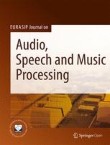The European Association for Signal Processing (EURASIP) was founded on 1 September 1978 to improve communication between groups and individuals that work within the multidisciplinary, fast growing field of signal processing in Europe and elsewhere, and to exchange and disseminate information in this field all over the world. The association exists to further the efforts of researchers by providing a learned and professional platform for dissemination and discussion of all aspects of signal processing including continuous- and discrete-time signal theory, applications of signal processing, systems and technology, speech communication, and image processing and communication.
EURASIP members are entitled to a 10% discount on the article-processing charge. To claim this discount, the corresponding author must enter the membership code when prompted. This can be requested from their EURASIP representative.
In recent years, the adoption of deep learning techniques has allowed to obtain major breakthroughs in the automatic music generation research field, sparking a renewed interest in generative music. A great deal of work has focused on the possibility of conditioning the generation process in order to be able to create music according to human-understandable parameters. In this paper, we propose a technique for generating chord progressions conditioned on harmonic complexity, as grounded in the Western music theory. Read the full article here.
